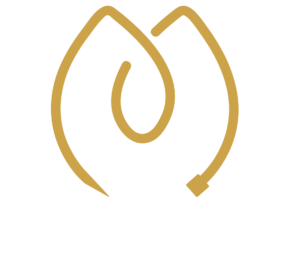What Does Uterine Fibroid Embolisation Cost in South Africa?
Understanding the intricacies of uterine fibroid embolisation costs and how they compare to surgical alternatives is crucial for making smart healthcare decisions. Whether you’re evaluating medical aid coverage or considering a minimally invasive procedure, being informed can alleviate financial stress and improve your health outcomes. Uterine fibroid embolisation cost in South Africa depends on several factors, from the medical facility chosen to individual recovery needs. Understanding these costs can help you plan ahead and avoid unexpected financial burdens.
What Affects Uterine Fibroid Embolisation Cost in South Africa?
Medical Facility and Specialist Fees
The type of hospital or clinic you choose influences the overall cost. Private hospitals with advanced equipment may charge more than smaller facilities. Additionally, specialist fees vary based on experience and location, with interventional radiologists in cities like Johannesburg, Cape Town, and Pretoria often charging higher rates.
Hospital Stay and Anaesthesia Costs
Most women require an overnight stay after the procedure, though some may need a second night, which adds to the cost. Anaesthetist fees also contribute to the total expenses.
Pre-Procedure Tests and Additional Expenses
Doctors may recommend tests such as a full blood count, renal function tests, or an MRI before the procedure. These are necessary to assess fibroids and ensure a safe procedure, impacting the overall uterine fibroid embolisation fees.
Recovery and Follow-Up Consultations
After the procedure, most women return to work within a week, but recovery can extend up to two weeks. Some follow-up appointments may be necessary, contributing to the total cost.
By considering these factors, you can better anticipate costs and determine what financial coverage may be available.
Uterine Fibroid Embolisation Cost in South Africa: Is It Covered by Medical Aid?
Many women considering this procedure often ask whether medical aid covers it. Most medical aid providers do offer coverage, reducing the amount patients need to pay. However, the exact coverage depends on the specific provider and plan, making it essential to check the details with your insurer in advance.
What Costs Are Covered?
Medical aid typically includes key procedure costs such as specialist fees, hospital admission, anaesthesia, and the embolisation itself. Some plans also cover pre-operative tests like imaging scans and blood work, which are required to assess fibroids before treatment.
Pre-Authorisation Requirements
To ensure that medical aid covers the typical uterine fibroid embolisation fees in South Africa, pre-authorisation is usually needed. This process involves submitting medical reports and a specialist referral. Without prior approval, patients may have to cover costs themselves or face delays in treatment.
Out-of-Pocket Expenses
Even with medical aid, some expenses may not be fully covered. These could include additional scans, co-payments, or extra hospital fees. Patients should contact their insurer for a detailed breakdown to avoid unexpected costs.
Understanding how medical aid applies to the uterine fibroid embolisation cost in South Africa helps patients plan financially and access treatment with confidence.
Fibroid Embolisation Fees in South Africa: How It Compares to Surgery
Besides the many benefits of fibroid embolisation over surgery, the uterine fibroid embolisation cost in South Africa is often lower than that of surgical procedures like myomectomy or hysterectomy. Many women choose this treatment because it is less invasive and offers a quicker recovery. Understanding the cost differences can help in making an informed decision.
Myomectomy vs Uterine Fibroid Embolisation
Myomectomy, a surgical procedure that removes fibroids while preserving the uterus, typically costs around 30% more than uterine fibroid embolisation. This is due to longer surgery times, increased hospital stays, and post-operative care expenses. Patients undergoing myomectomy may also need additional recovery time, adding to indirect costs such as loss of income.
Hysterectomy: The Most Expensive Option
Hysterectomy, which involves the complete removal of the uterus, is generally the most costly treatment for fibroids. The uterine fibroid embolisation cost in South Africa is notably lower since this procedure requires only a short hospital stay, whereas a hysterectomy involves extended recovery, prolonged inpatient care, and higher medical bills. Additionally, time off work can further contribute to financial strain.
Hospital and Recovery Expenses
Since uterine fibroid embolisation is a minimally invasive procedure, most patients stay in the hospital for just one night. In some cases, an additional night may be necessary for larger fibroids, but even with this, the overall expenses remain more affordable compared to surgery. The cost of hospital care, specialist fees, and related medical expenses is generally covered by most medical aids in South Africa, making this option even more accessible.
With hospitals offering uterine fibroid embolisation in major cities like Cape Town, Johannesburg, and Pretoria, women have the opportunity to choose a cost-effective and minimally invasive solution for treating uterine fibroids.
Conclusion
Take control of your healthcare choices by connecting with our experienced specialists for personalised advice and support. To learn more about how we can assist you in navigating these decisions, contact Minima Radiology today and embark on your journey toward a healthier future.





Leave a Reply
Want to join the discussion?Feel free to contribute!